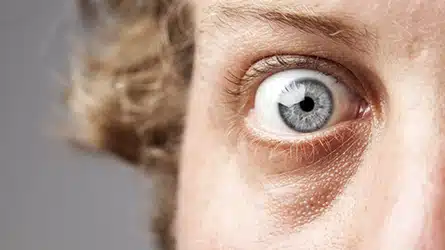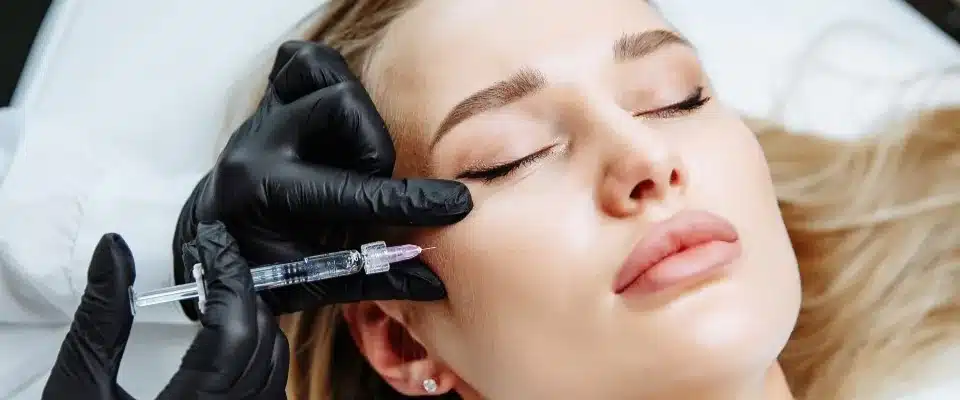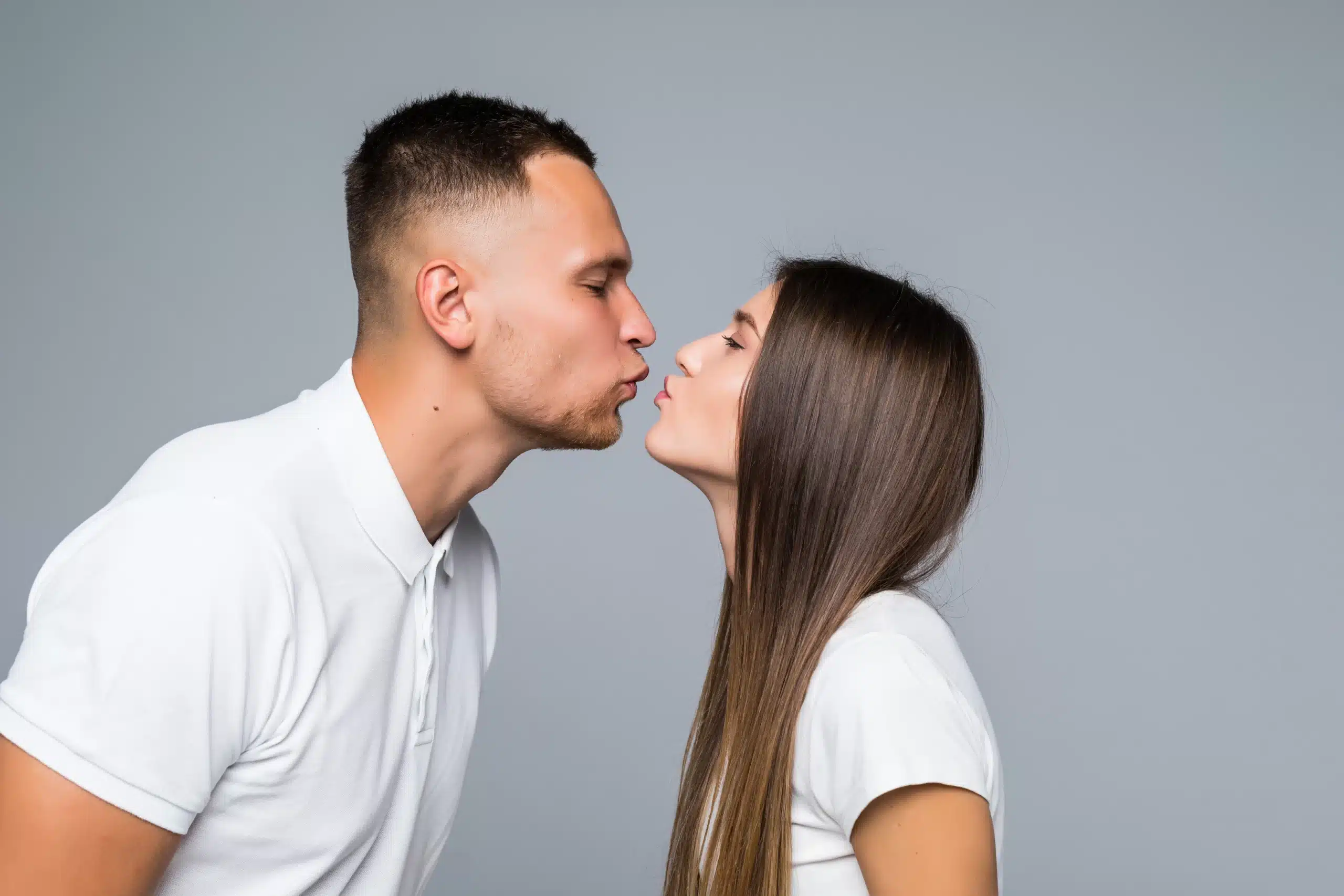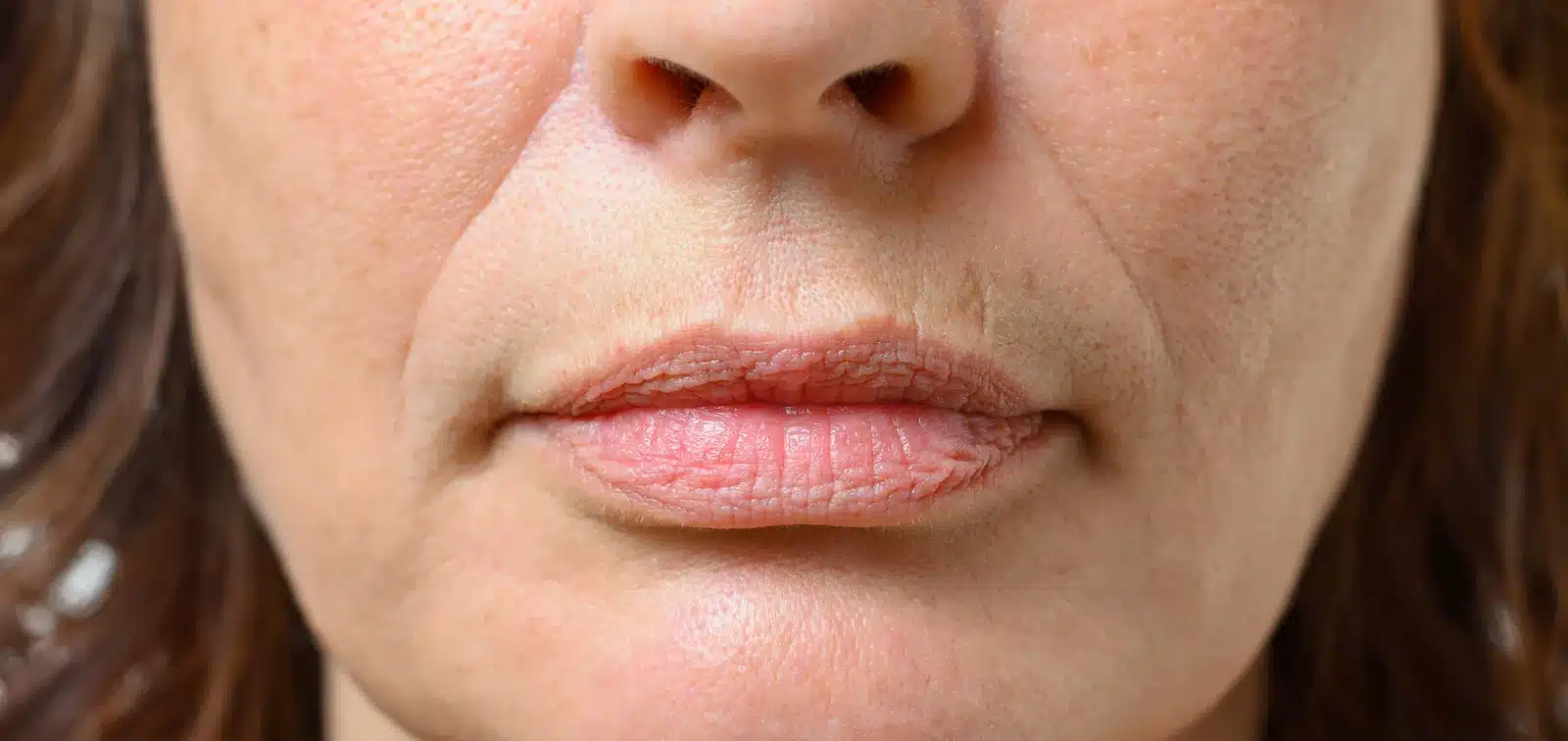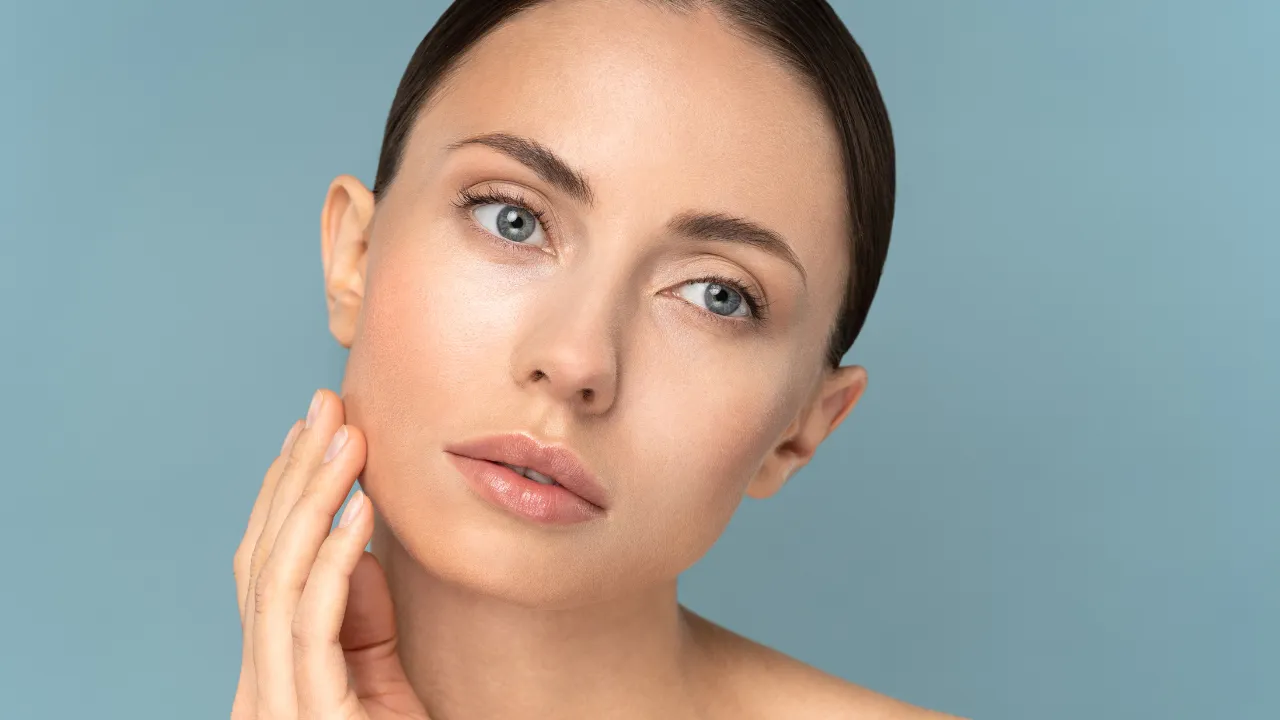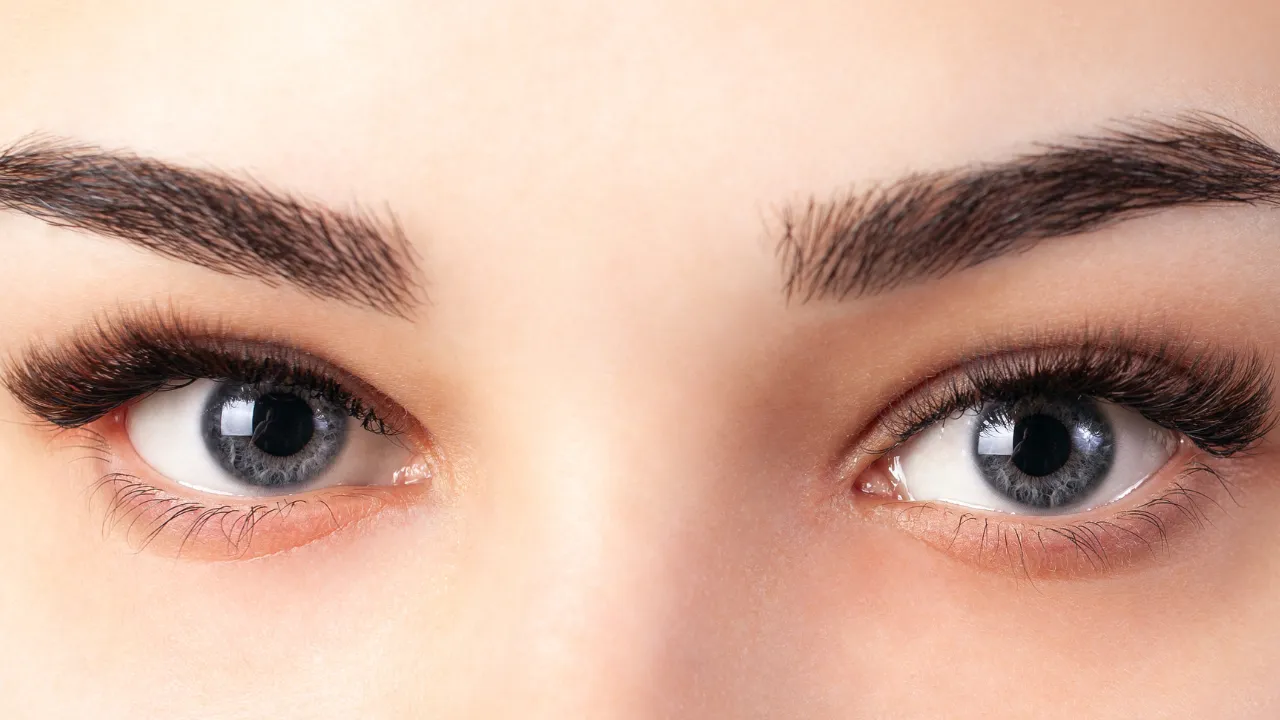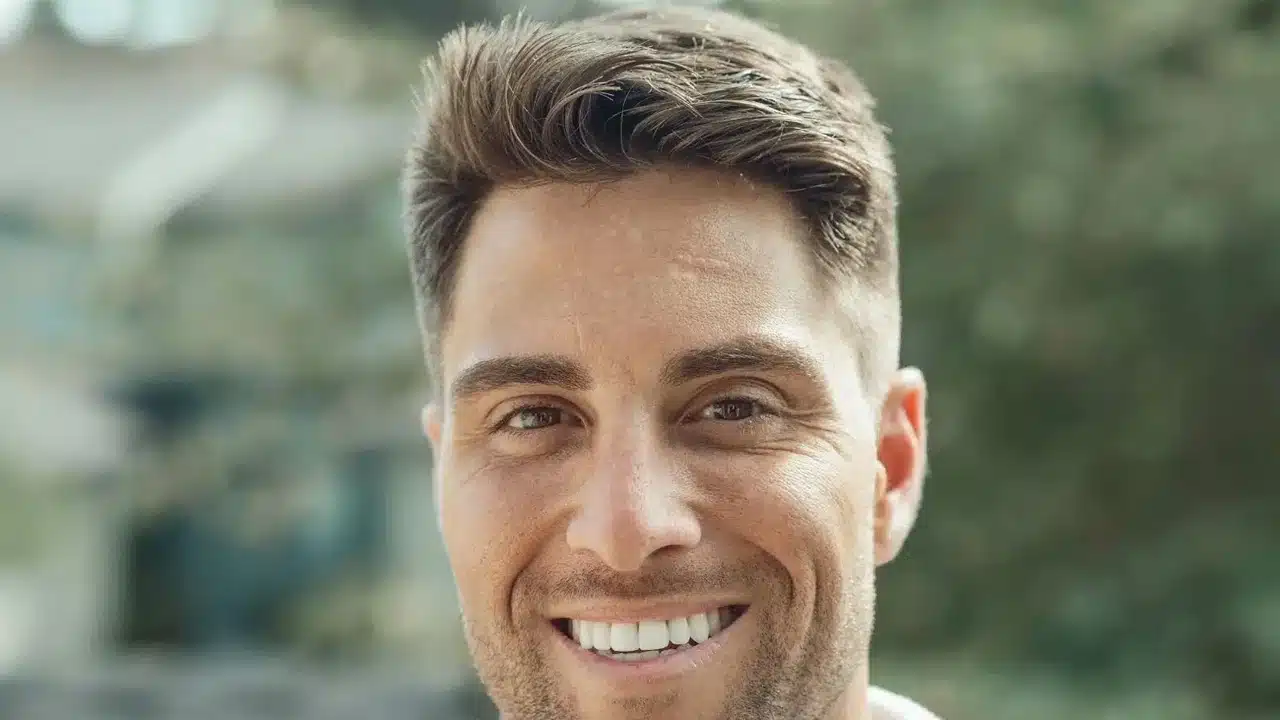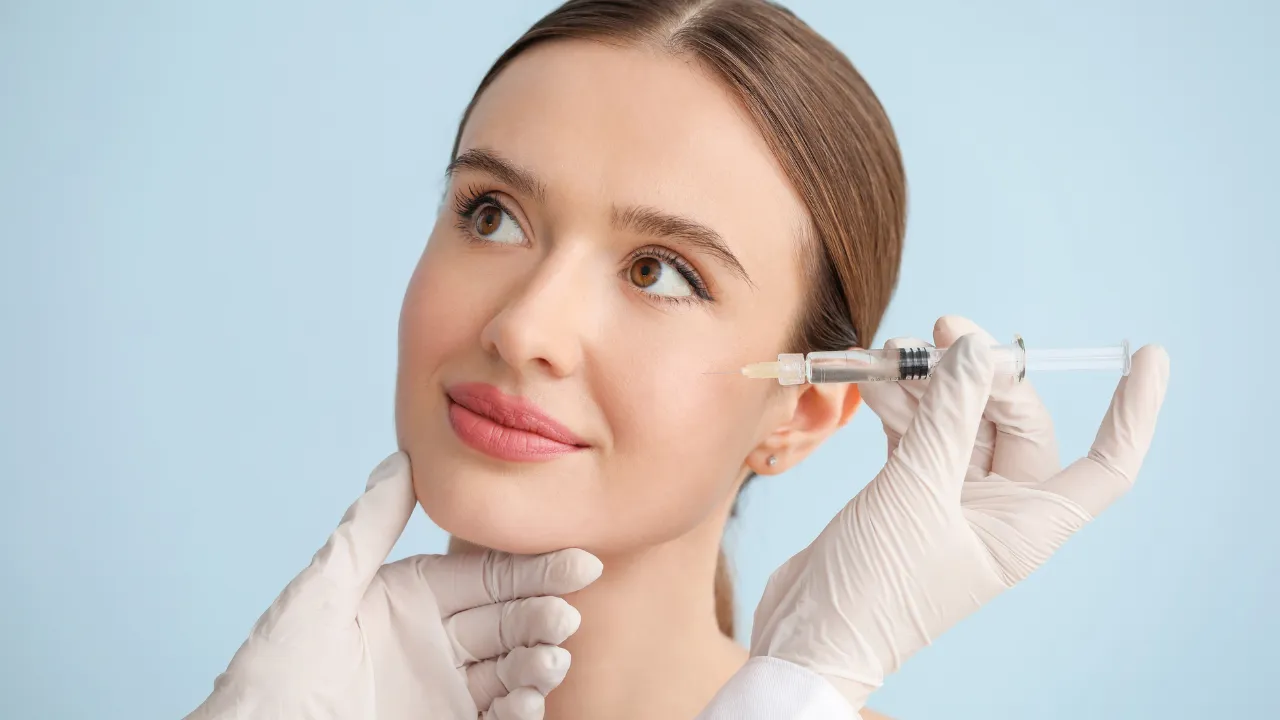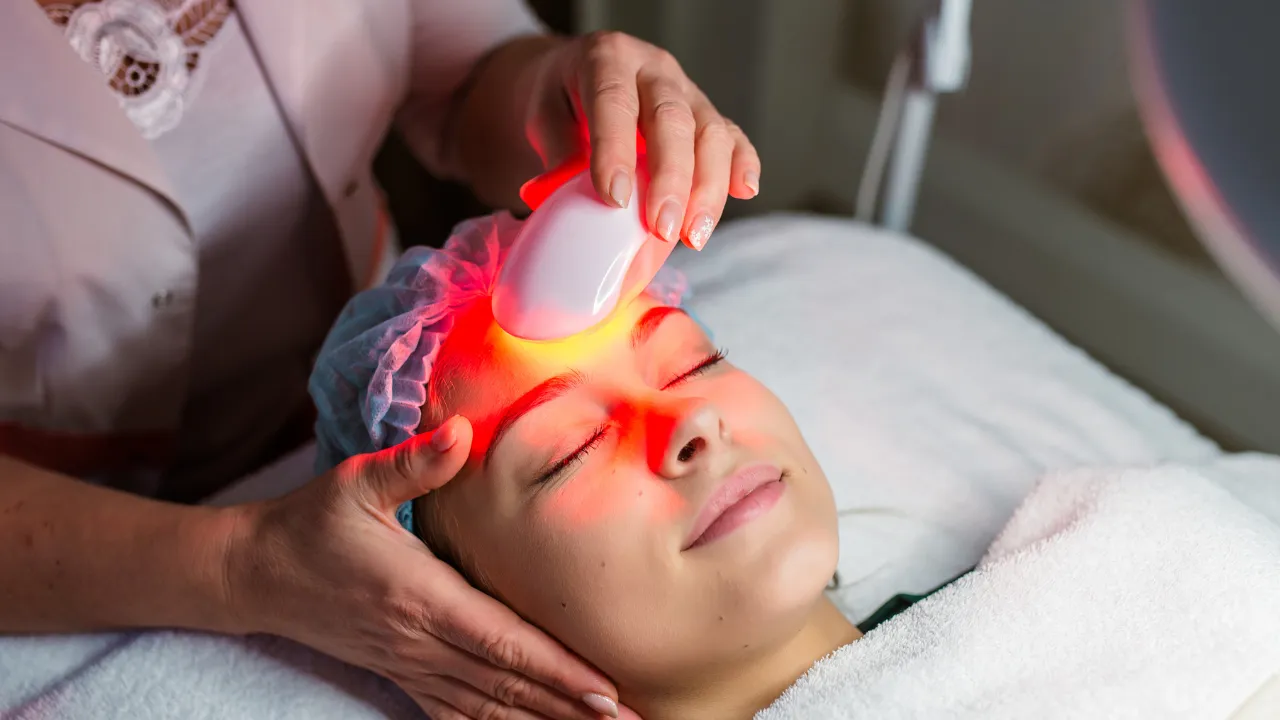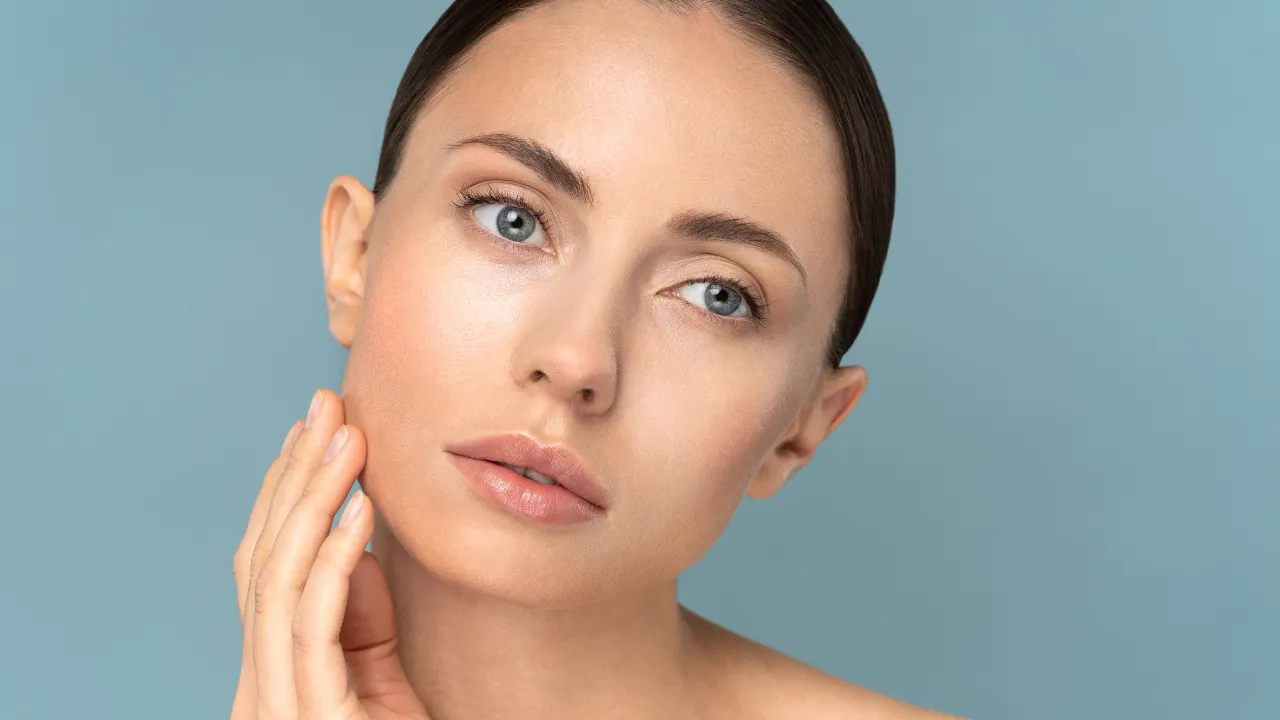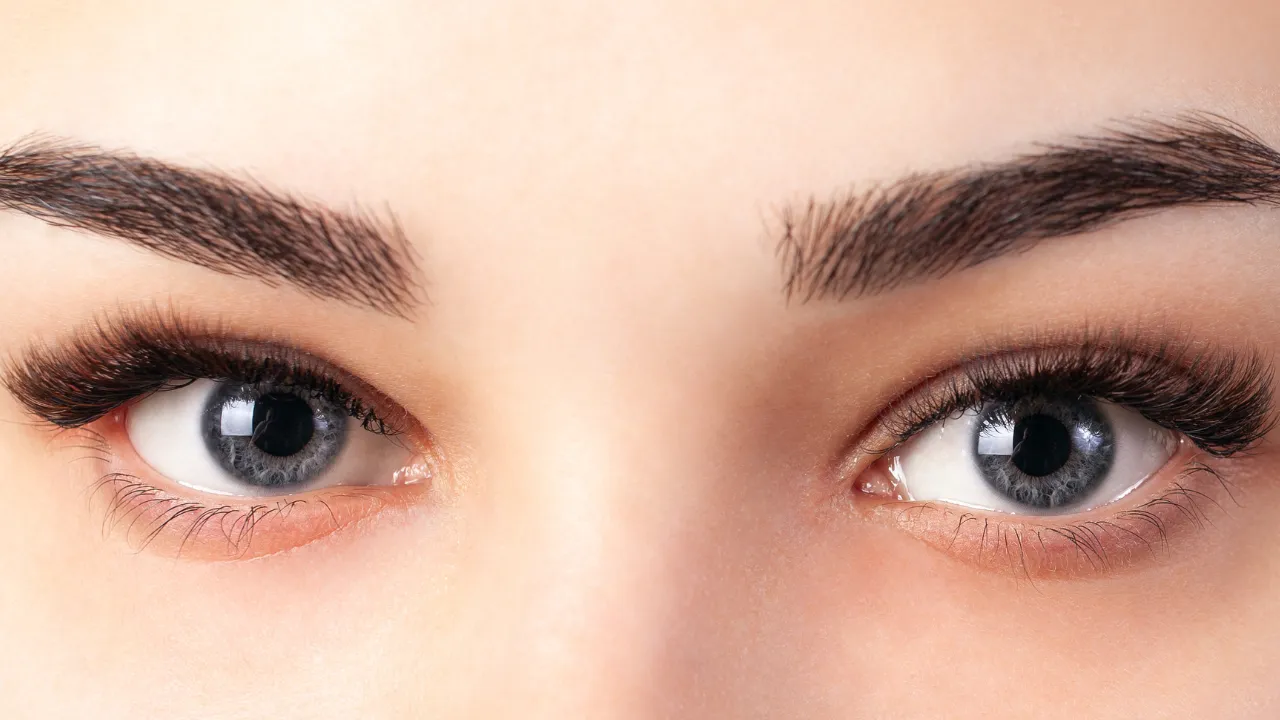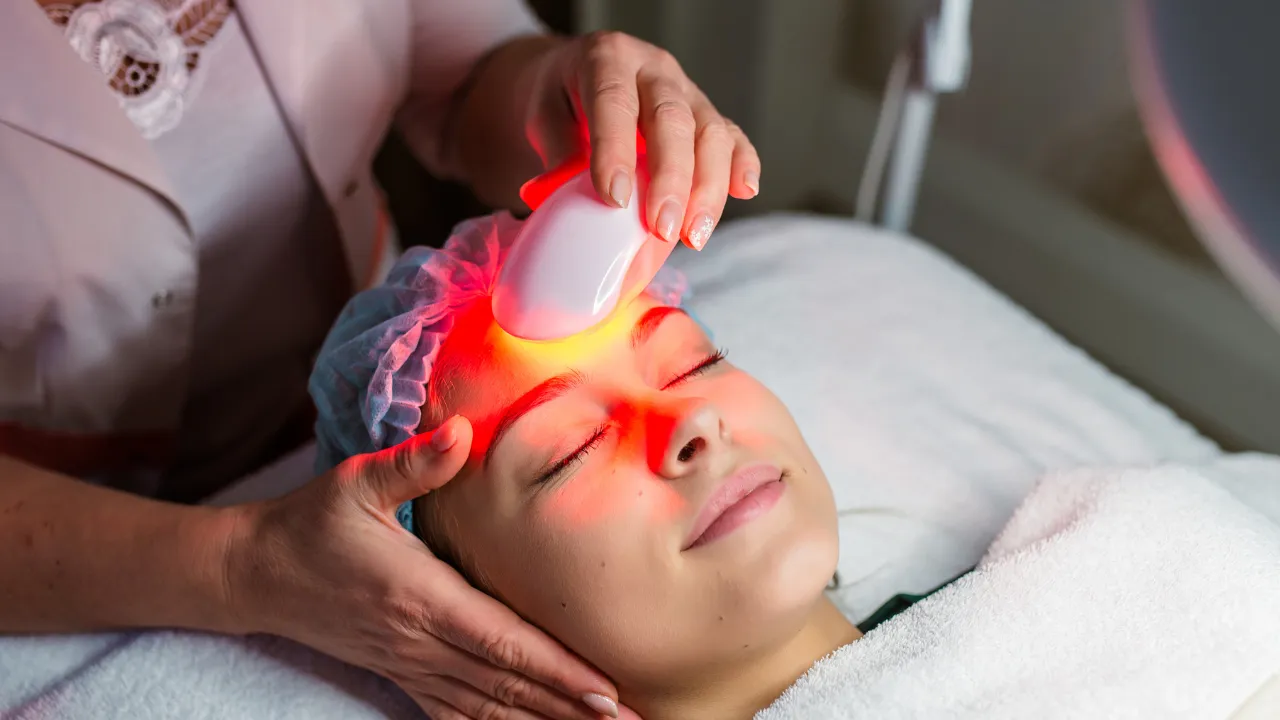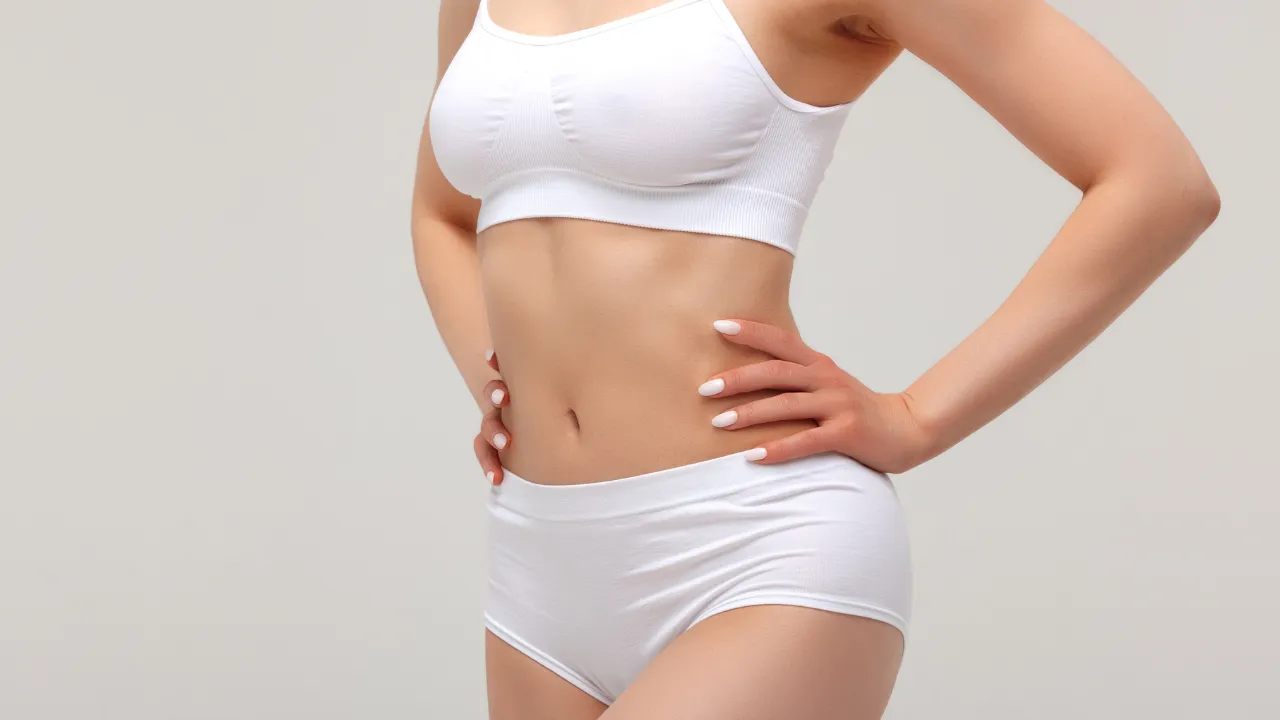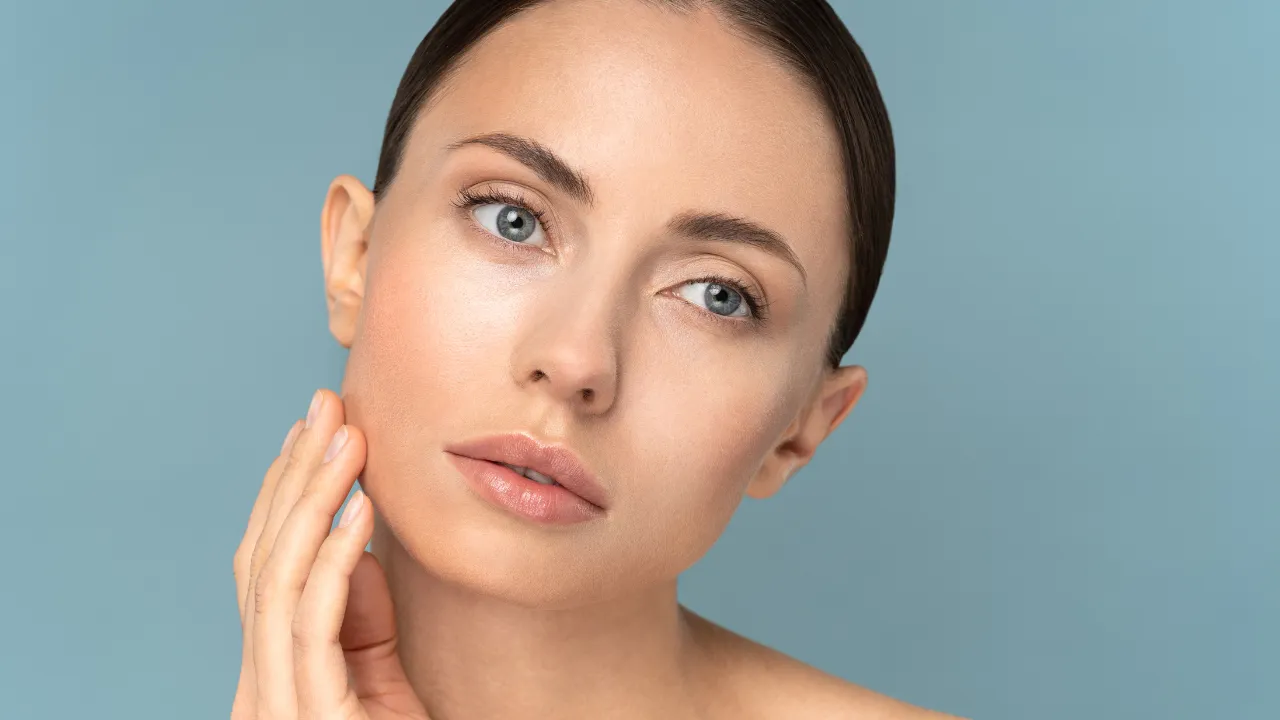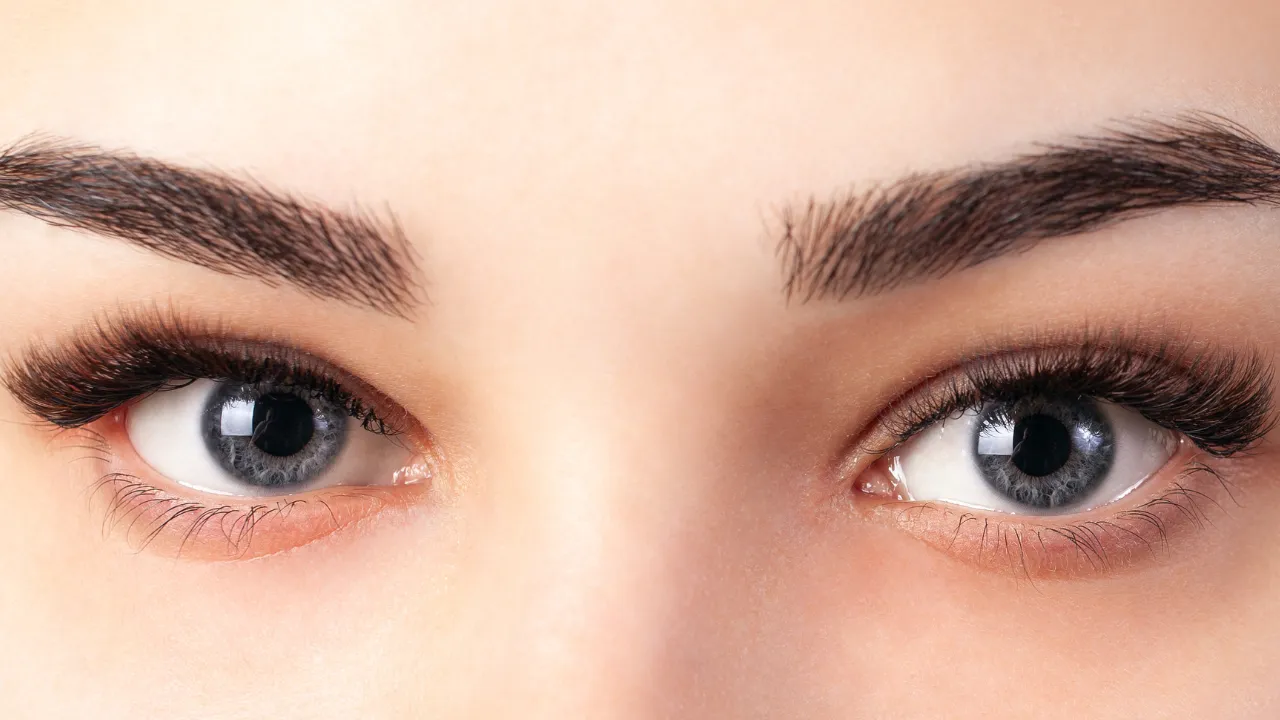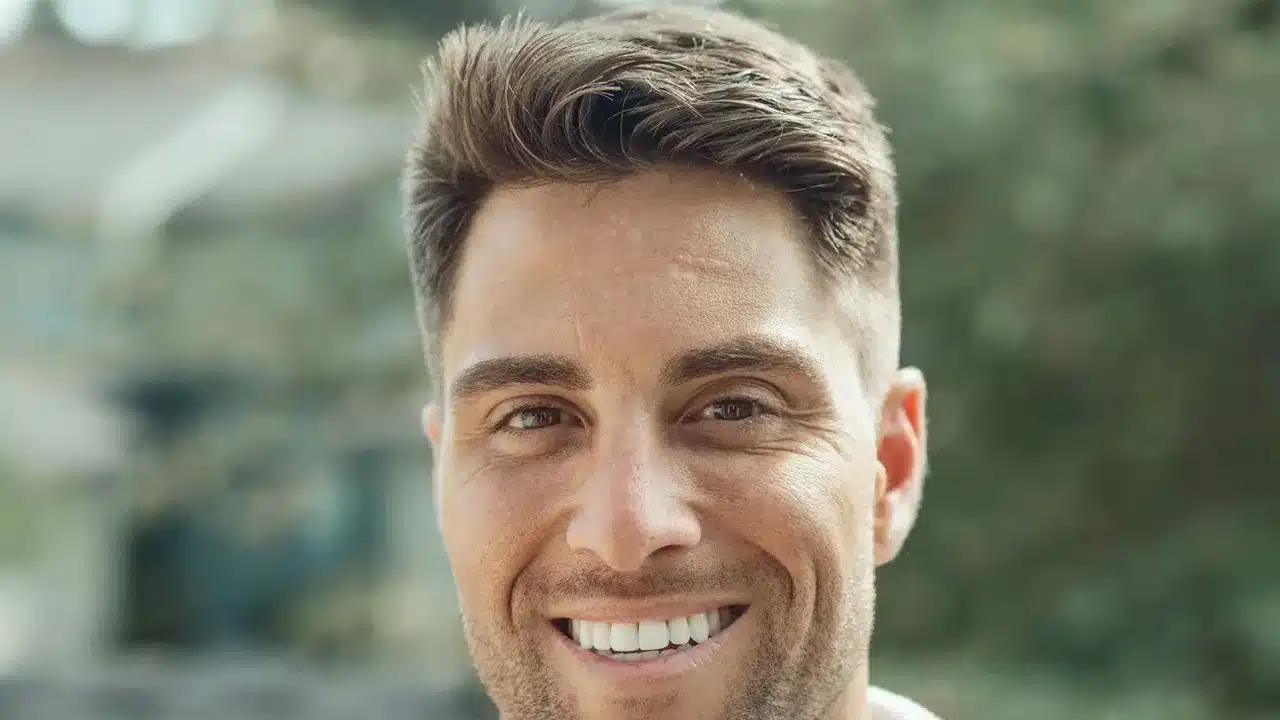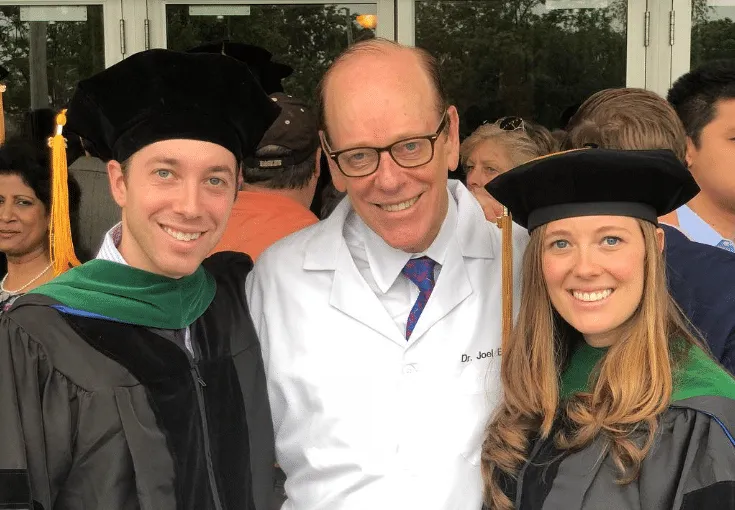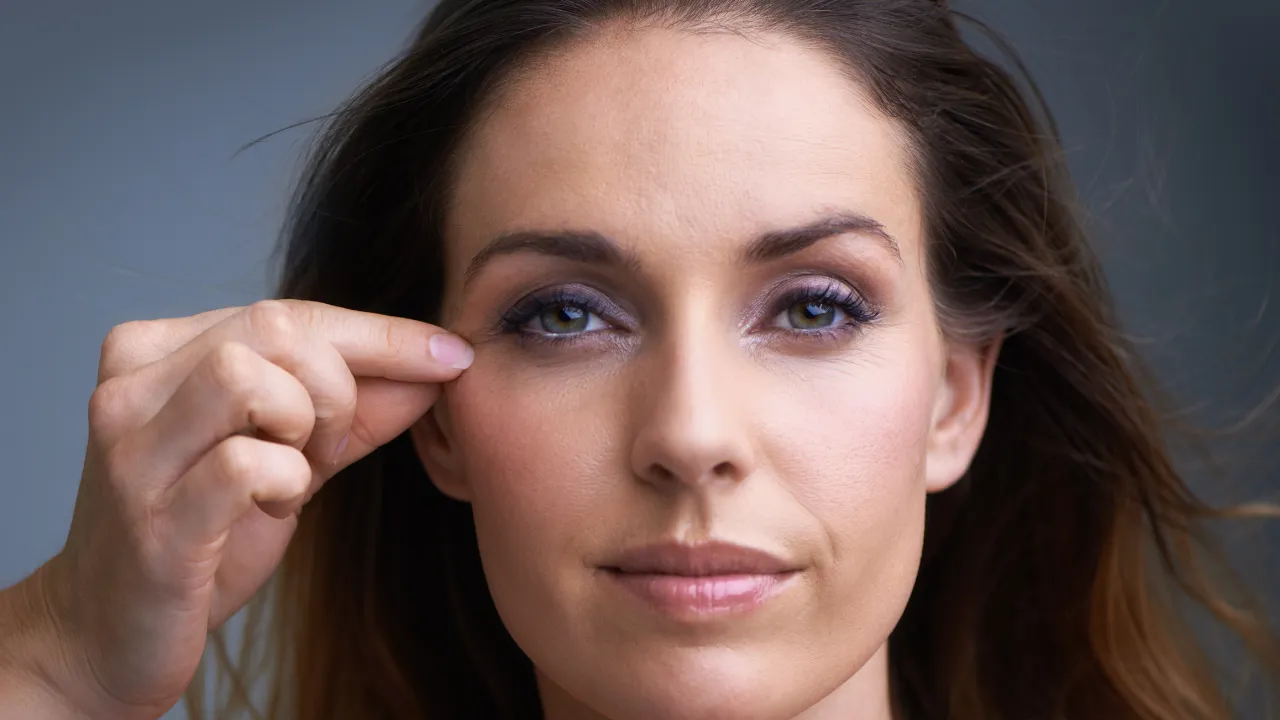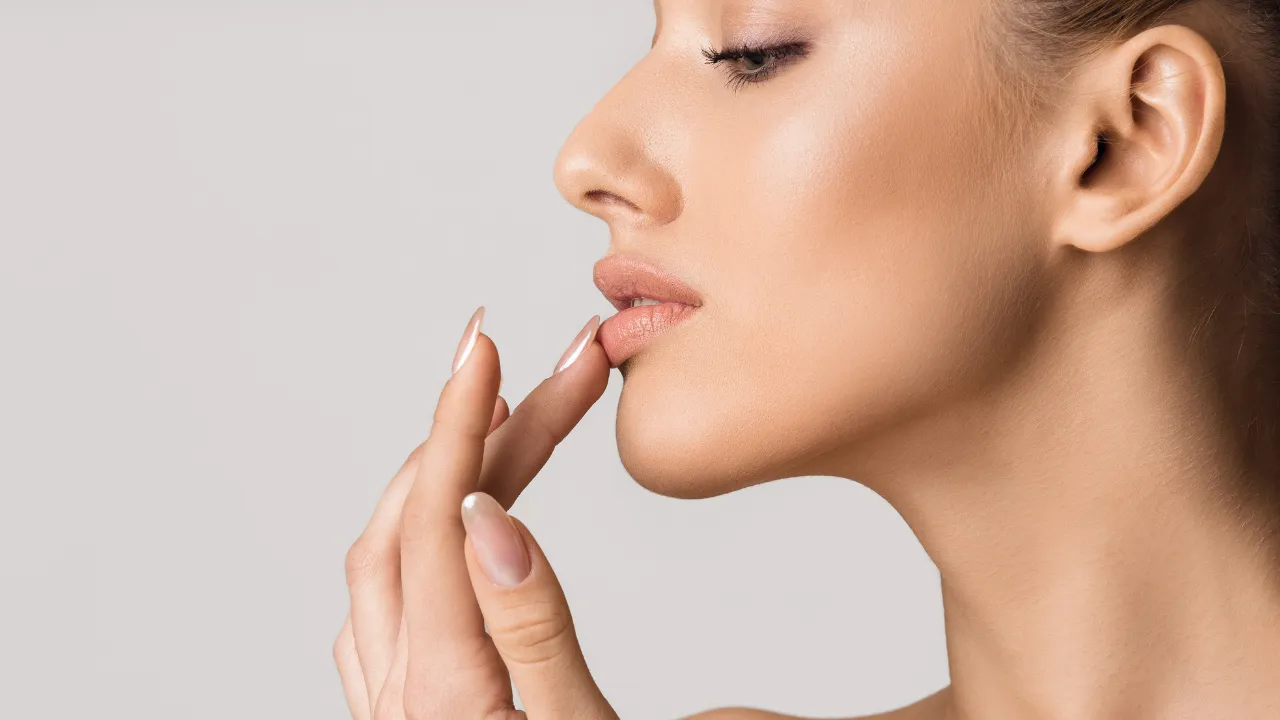At Kopelman Aesthetic Surgery in New York City, Dr. Joel Kopelman, an expert in facial plastic surgery and oculoplastic procedures, offers advanced solutions for eyelid retraction to help patients achieve both medical and aesthetic goals.
This issue can affect the appearance and function of your eyes, making early diagnosis and proper care essential. In this guide, you’ll learn about its causes, symptoms, and treatments to help you make informed decisions about your eye health.
Key Takeaways
- Eyelid retraction occurs when the upper or lower lid sits too high or low, exposing more of the eye and potentially causing dryness, irritation, or vision problems.
- Common causes include thyroid eye disease, trauma, and neurological conditions, each requiring careful evaluation to determine the best treatment approach.
- Accurate diagnosis involves precise measurements, such as MRD1 and MRD2, to assess eyelid position and guide personalized care.
- Treatment options range from non-surgical methods, such as lubricating drops and injections, to surgical techniques like Müller’s muscle recession and spacer grafts, often performed by experts like Dr. Kopelman for functional and aesthetic improvements.
Table of Contents
ToggleUnderstanding Eyelid Retraction
What Is Eyelid Retraction?
Eyelid retraction happens when your eyelid sits higher or lower than its normal position, exposing more of the white part of your eye. This exposure can sometimes result in a visible scleral show, where the white of the eye is more prominent than usual.
It might cause discomfort, dryness, or cosmetic concerns. Patients may notice retracted eyelids that make their eyes appear wider or more open than usual. At Kopelman Aesthetic Surgery, Dr. Joel Kopelman offers treatments tailored to both medical and aesthetic needs.
Upper vs. Lower Eyelid Retraction
Upper eyelid retraction makes the eyes look overly open, while lower lid changes cause drooping and dryness. Issues, like weakened connective tissue and changes in the inferior rectus muscle, can contribute to lower lid problems. Knowing which eyelid is affected guides treatment planning by specialists, such as Dr. Kopelman.
Difference Between Ptosis and Eyelid Retraction
Ptosis means the eyelid droops lower than usual, partly covering the pupil, while eyelid retraction raises or lowers the lid away from its natural resting point. Understanding the role of the levator muscle and eyelid retractor muscles helps distinguish these conditions during assessment by plastic surgeons or oculoplastic experts. Dr. Kopelman carefully evaluates these differences during consultations.
Symptoms and Causes of Eyelid Retraction
Common Symptoms and Visible Changes
People with the condition often notice eyes that look wider, dryness, difficulty blinking, or a staring appearance. Changes in eyelid position can also make the eyes look asymmetrical or create a startled expression. Symptoms can range from mild discomfort to significant vision issues. Dr. Kopelman helps patients understand these changes and offers solutions for both functional and aesthetic concerns.
Complications Linked to Eyelid Retraction
Untreated cases can lead to dryness, corneal damage, and ulcers, all of which threaten vision. Patients with grave disease, another term for Graves’ disease, often experience these problems due to autoimmune effects. Exposure to keratopathy and lagophthalmos can lead to further damage to the eye if left untreated. Early care under the guidance of specialists like Dr. Kopelman helps prevent lasting harm.
Main Causes of Eyelid Retraction
Thyroid Eye Disease
Thyroid eye disease is a leading cause of this condition, causing swelling and scarring around the eye muscles. Patients often experience symptoms such as bulging eyes or double vision. Dr. Kopelman frequently observes this in thyroid cases and tailors treatment to the severity of the disease. Eyelid retraction due to thyroid eye disease can be particularly challenging and often requires a combination of medical and surgical management.
Trauma or Surgery
Trauma or surgery can cause scar tissue that pulls the eyelid higher or lower. This issue might arise after blepharoplasty or tumor removal. Careful surgical planning, as performed by Dr. Kopelman, reduces the risk of postoperative lid position problems. The presence of damaged eyelid skin from prior procedures can complicate repair, requiring delicate reconstruction by a board-certified specialist.
Neurological or Mechanical Issues
Neurological disorders or mechanical issues, such as tumors, can affect lid position. Dr. Kopelman uses imaging and exams to identify these causes. In complex cases, collaboration with the Department of Ophthalmology can provide further insights for diagnosis and treatment.
Can Eyelid Retraction Go Away?
When to See a Doctor
Mild cases may improve if caused by temporary swelling. Persistent symptoms need medical attention. You should see a doctor if your eyes feel dry, vision blurs or your lids change suddenly. Dr. Kopelman emphasizes the importance of timely evaluation to prevent complications.
Mild vs. Severe Cases
Mild changes may improve with lubricating drops. Severe cases often need surgery to protect the eye and improve appearance. Dr. Kopelman evaluates each case, balancing medical needs with natural-looking results.
Diagnosing Eyelid Retraction
Clinical Measurements and Tests
Doctors diagnose the condition using precise measurements:
- MRD1: distance from the upper eyelid margin to the pupil center
- MRD2: distance from the lower eyelid margin to the pupil center
- Lid lag: eyelid movement compared to eye movement
MRD1 measures typically around 4–5 mm, MRD2 about 5.5 mm, and MPLD less than 5.3 mm. These numbers help Dr. Kopelman plan treatment and avoid overcorrection.
Identifying Upper and Lower Lid Issues
Upper lid changes may involve overactive muscles, while lower issues can result from scarring or tissue loss. Dr. Kopelman’s exams and patient history help pinpoint which part of the eyelid is affected, ensuring personalized care.
Common Surgical Techniques for Eyelid Retraction
Surgical repair involves techniques that adjust lid height and restore function. Dr. Kopelman may perform Müller’s muscle or levator recession to reduce a startled look and protect the eye. Spacer grafts are often used to support or lower the eyelid using materials such as scleral tissue, cartilage, or dermis.
Canthoplasty tightens the lower lid. All these methods are vital components of eyelid retraction repair performed by board-certified plastic surgeons.
Surgical correction for eyelid retraction is complex and must account for each patient’s anatomy and symptoms. Procedures for upper eyelid retraction often involve weakening the levator muscle or Müller’s muscle. Techniques like Müller’s muscle recession adjust the lid height by detaching the muscle partially from the tarsus, reducing excessive elevation. In some cases, adjustable sutures allow surgeons to fine-tune the lid position after surgery for better symmetry.
When severe retracted eyelids occur, surgeons may place a spacer graft between the eyelid tissues. Spacer grafts lower the eyelid by adding tissue bulk and preventing the lid from retracting upward again. Common graft materials include hard palate mucosa, ear cartilage, or preserved scleral tissue. These materials integrate well and help restore normal eyelid position and function.
Procedures for lower eyelid retraction often target the inferior rectus muscle if it’s scarred or tight due to thyroid eye disease. A recession of the inferior rectus muscle can relieve downward pull and help correct vertical misalignment. Lower lid surgery may also involve canthoplasty to tighten the lid and prevent outward sagging, which helps avoid scleral show and exposure-related irritation.
The choice of technique depends on the severity of the retraction and whether the problem affects one or both eyelids. Dr. Kopelman utilizes high-precision planning and intraoperative measurements to ensure accurate correction, avoiding both undercorrection and overcorrection. Careful adjustments ensure the result looks natural and protects the eye’s health.
Eyelid Retraction Treatment and Surgery
Non-Surgical Treatments for Lid Retraction
Non-surgical options can relieve mild cases. These include:
- Artificial tears
- Moisture chamber glasses
- Botulinum toxin injections
- Steroid injections for thyroid eye disease
Dr. Kopelman helps patients choose the best course of action.
Eyelid Retraction Surgery and Repair
Surgery is often needed for moderate or severe cases. Dr. Kopelman customizes procedures like:
- Spacer grafts
- Müller’s muscle recession
- Canthoplasty
- Skin grafts
These restore both function and cosmetic balance.
Success Rates and Risks
Surgery for lid position problems has a high success rate. Risks include under- or over-correction, dry eyes, scarring, or the need for revision surgery. Dr. Kopelman explains these points carefully and works to minimize their impact. His precise technique enables him to achieve natural-looking results.
Recovery and Expected Results
Recovery varies depending on the procedure. Patients often experience mild swelling, return to light activity quickly, and achieve full healing within a few months. Dr. Kopelman provides detailed instructions for safe recovery.
He also advises sleeping with the head elevated and avoiding strenuous activities. Promptly reporting pain or vision changes is key.
Long-Term Outlook After Eyelid Retraction Surgery
Many patients enjoy long-lasting results. Some may need touch-ups if the lid position changes over time. Conditions like thyroid eye disease can influence outcomes. Dr. Kopelman monitors patients to ensure stable results.
Cost and Insurance Considerations for Eyelid Retraction Treatment
Treatment costs vary based on severity and type of procedure. Non-surgical care costs less but may be temporary. Surgery costs more due to its complexity. Dr. Kopelman offers clear cost estimates. Insurance may cover surgery if vision or eye health is affected.
Cosmetic procedures alone may not be covered. Dr. Kopelman’s team helps patients understand insurance details.
Daily Life and Eyelid Retraction
Vision and Comfort Concerns
This condition can interfere with reading, computer work, and cause sensitivity to wind or light. Artificial tears and sunglasses help protect comfort. Dr. Kopelman works with patients to manage these daily challenges.
Cosmetic Effects and Confidence
Retracted lids can affect how patients perceive their appearance. Treatment often restores a balanced look and improves confidence. Dr. Kopelman understands the emotional effects and focuses on natural-looking outcomes.
Frequently Asked Questions About Eyelid Retraction
Can eyelid retraction be prevented?
Regular eye checkups and early treatment of conditions like thyroid eye disease can reduce the risk of eyelid retraction. However, some causes, such as genetics or trauma, are not always preventable. Dr. Kopelman encourages patients to monitor any changes in their eye appearance and seek medical advice quickly. Early intervention can help avoid severe complications and preserve eye health.
Is eyelid retraction painful?
Eyelid retraction itself may not cause direct pain, but it often leads to dryness and irritation. These symptoms can cause a burning or gritty sensation in the eye, affecting daily comfort. Patients might also feel increased light sensitivity or discomfort in windy conditions. Consulting a specialist like Dr. Kopelman ensures proper relief and care.
How long does eyelid retraction surgery last?
Eyelid retraction surgery often provides long-lasting results, especially when performed by experienced surgeons like Dr. Kopelman. However, conditions such as thyroid eye disease may lead to future changes that necessitate additional adjustments. Most patients enjoy stable results for many years. Regular follow-up appointments help detect and manage any new issues early.
Does insurance cover eyelid retraction surgery?
Insurance may cover eyelid retraction surgery when the condition impacts vision, causes chronic discomfort, or threatens eye health. Procedures performed purely for cosmetic reasons are less likely to qualify for coverage. Dr. Kopelman’s office assists patients in reviewing insurance requirements and gathering the necessary documentation. Understanding coverage options can alleviate financial concerns and help patients proceed with confidence in their treatment.
If you’re experiencing symptoms of eyelid retraction or have concerns about your eye health or appearance, Dr. Kopelman and his team are here to help. Schedule a consultation at Kopelman Aesthetic Surgery to explore personalized treatment options and achieve results that protect both your vision and confidence.

